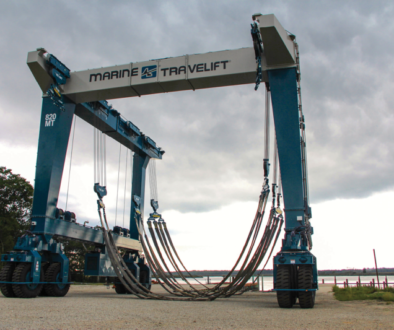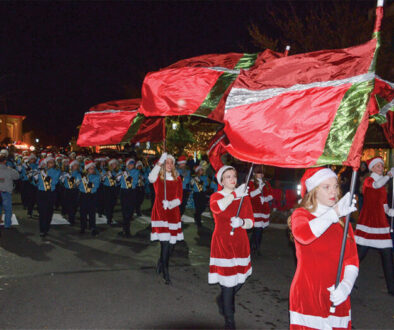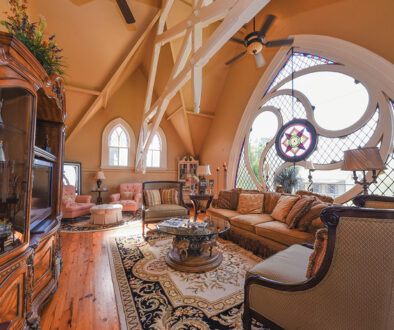The Iron Age: Story of a doomed Cape May pier

Cape May’s earliest success as a resort destination was based on accessibility to cities like Philadelphia and Baltimore and the health benefits of the ocean. People deserted cities and their summer heat and diseases for the seaside, often staying for weeks or even the whole summer season. Prior to train travel, both Cape May and Long Branch, New Jersey—catering to New Yorkers—were easy to reach by boat. But, as trains were established, other towns—such as Atlantic City—developed and thrived along the Jersey shore. Health benefits were no longer a sufficient draw, and resort communities began to compete with each other to develop attractions to lure summer visitors.
Piers were just such big attractions. Owners of beachfront land could maximize their property by purchasing riparian (water) rights in front of their land and then building piers to extend over the ocean. Piers had numerous functions: fishing, boat docks, or pleasure activities such as opera, vaudeville, or theater—or combinations of these activities.

The earliest piers were wooden and susceptible to destruction from fire and the often fierce winter storms, but the economics were productive enough to allow them to be rebuilt each time they were destroyed. Early Cape May had wooden piers—the Congress Hall Pier and Denizot’s Pier were used mainly for docking the steam ships bringing tourists from New York or Philadelphia, or for fishing. In Long Branch, the pier was primarily a dock for New York ferries and, after being rebuilt numerous times, in 1879 was built of iron, the first iron pier on the Jersey coast.
Cape May townspeople frequently talked about improvements and what could or should be done to keep the resort profitable, popular, and competitive—especially with Atlantic City—but the huge 1878 fire that burned acres of property necessitated improvements. Properties along the beachfront from Perry through Ocean Streets and back to Washington Street were totally burned by the fire. Both the Congress Hall and Denizot Piers survived the fire, only to be destroyed later by a March 1879 storm. As the town was rebuilding, and perhaps in competition with Long Branch’s new iron pier, papers were full of recommendations for Cape May to have an iron pier for docking ships, fishing, and amusements.

In May of 1880, the Ocean Wave optimistically reported that the National Construction Company would begin building the Cape May Pier immediately with materials and tools to be shipped from Long Branch. Later that same year, the paper included reports that an iron pier was unlikely even though it was regarded as “one of the most important steps that could be taken for the advancement of our interests.” Subscriptions for funds to build the pier were not met, and the reporter noted that it was remarkable “with what stubbornness such enterprises frequently drag their slow length along.”
Interestingly, the primary opposition to the iron pier came from local farmers, who feared that southern produce would be easily transportable to Cape May and would injure their business. It was not until four years later that the iron pier would be built, ultimately ending up in ownership and operation by Victor Denizot.
A French immigrant, Denizot came with his family to Steubenville, Ohio in 1852 and around 1865 moved to Cape Island with his wife and daughter. His parents, farmers in West Cape May, and a brother Julius, who owned a hardware store, also settled here. Victor would play a key role in Cape May’s tourist industry, beginning with building and operating the Cape May House on Jackson Street, an early boarding house he opened soon after his arrival. His successful enterprises allowed him to expand his property holdings, including owning several other boarding houses and the Denizot Pier. Eventually he owned both beachfront corners of Decatur Street, building a small hotel on the western corner and the Hotel Lafayette on the eastern side.


Denizot’s wooden pier was located at the foot of Decatur Street opposite property on the western corner. Originally a site of bathhouses, by 1875 Denizot had built several boarding houses on this corner, all of which burned in the 1878 fire and were replaced with Denizot’s Ocean View House, a small hotel and today the home of the Iron Pier Craft House. This same year, he obtained the riparian rights running 78 feet in front of this property. In August 1884, he purchased the riparian rights for 175 feet from the center of Decatur east along the beachfront in front of the Hotel Lafayette, which he had built and opened in 1881. He then exchanged riparian rights of 100 feet of beachfront extending 50 feet east and west from the center of Decatur Street for 100 shares of capitol stock in the Cape May Ocean Pier Company valued at $50 each, a total of $5,000.
The Cape May Ocean Pier Company constructed the Iron Pier at the end of Decatur Street on the site of the former wooden Denizot Pier which had again been destroyed by a storm earlier that year. The company was formed in March 1883 for the purpose of selling subscriptions to fund the Pier, and directors included both Philadelphia and Cape May businesspeople. In April, the company contracted with the Phoenix Bridge Company of Phoenixville, Pennsylvania to construct an iron pier over the ocean. It was 1,000 feet long and 30 feet wide, with a small pavilion halfway from the entrance and an end pavilion of 100 x 134 feet for dancing and band concerts within the hexagonal-shaped end of the Pier.

The Ocean Wave of July 1884 reported that 300 tons of iron and 700,000 feet of lumber would be used in the construction. Under the main deck was a smaller second deck for fishing. All the primary functions of a pier—fishing, amusement, and docking ships—were contained in this one large pier, which was projected to open on July 4, 1884 and which cost $60,000 to build.
The Pier finally opened in August 1884, although the end pavilion was still not yet completed. A year later, the end pavilion had been finished and enclosed with glass for opera and theater performances. The Pier struggled to be successful. Just four years after opening, in 1888, it was sold by sheriff sale to John G. Redding, who held a mortgage on the pier and who then sold it to Samuel James, a proprietor of the Hotel Lafayette. Again by sheriff sale, the pier was sold to John Tracey in 1891, and then in another sheriff sale in 1894 to Fred Arnold, who had already purchased the Denizot’s Ocean View House and opened it as Arnold’s restaurant—which became a Cape May institution for many years.
In 1896, the Pier was lengthened to add an additional pavilion beyond the theater, and the following year, Denizot constructed a boardwalk entrance to the pier four one-story shops facing the boardwalk. In August, The New York Times reported that the city solicitor declared these buildings illegal and recommended that they must be taken down as “it is an ancient custom here to prohibit anything from being built on the ocean side of the Boardwalk.” Nonetheless, the entrances remained, but were totally burned in 1907 at a loss of $20,000. They were replaced in time for the 1908 season with two-story structures, only to have the Pier itself destroyed by a barge in 1909.

The entrance buildings housed attractions themselves, including a photography studio called the Ping Pong Studio, a Japanese souvenir store, a movie theater, and a theater for Broadway productions. The Pier Apartments, where the Denizots lived, were on the second floor. These entrance buildings outlived the Pier itself but burned in 1925 two weeks after Victor Denizot’s death. The property was sold to Hunts Theater in 1926 and was replaced in approximately the same location by Hunt’s Pier.
Despite financial instability, the Iron Pier achieved the townspeople’s goal of offering attractions for summer visitors, and it was the primary tourist attraction in Cape May at the end of the 19th and into the 20th century. The under-construction iron pier was recommended as a centerpiece for band concerts and other performances. And, when the Pier finally did open on August 23, 1884, entertainment included the Waccocoe Band from Philadelphia, led by Professor Kindle for both dancing and concert. The Philadelphia Inquirer reported that “the thousands present were delighted and the event manifested interest in the ‘art divine,’” further reporting on the first hop, directed by Professor Asher, and the crowd’s spirit and vim.
The Pier was a varied source of amusements. The Philadelphia Times suggested that nannies and nurses could wheel the little children out into the ocean “without risking the pitching and rolling of the pleasure yacht and with as much ease as strolling on the Boardwalk.” Others suggested that the Pier was a perfect observation point for watching bathers or for just sitting and talking.

Throughout its years of operation, the Pier continued to sponsor dances, concerts, plays, opera, and theatrical performances, as well as the attractions housed in the pier entrance. The Cape May papers reported on noted opera stars who sang in the ocean-end pavilion, including Bessie Fairbair, Jennie Prince, Lillian Conway and Fred Frear. In 1891, the very popular Fra Diavolo, starring singer Robert Dunbar, was a highlight of the season. As opera became less popular, these performances were replaced with vaudeville shows and eventually by a theater that featured Broadway shows and casts. Local newspapers contained ads for shows such as Punch and Judy and the Morphet Brothers, Magicians and Wonder Workers, scheduled for both matinee and evening performances for a six-day run.
Fishing was also a very popular attraction—especially for the ladies, who were advised in a Philadelphia Times article to make up fishing parties for the Ocean Pier in the same way they would assemble a dance party, with further advice that a successful “fisher” would issue invitations to her friends and include an admission ticket to the Pier. The ladies were further advised that they themselves would handle the bait, but that the man who swept the lower pier deck would be a male chaperon so that if the ladies, amazingly, would get “a hook in their fingers or tangle their lines in hopeless confusion, the ocean pier quarter-deck sweeper would be ready at hand to extradite them.”
Although the Pier was not economically successful, its demise came not from economics but from being battered by a barge that broke loose from its moorings during a storm. Newspapers across the country reported the May 1909 event with headlines of “Cape May Pier Smashed.” Hundreds of people were reported to have lined the boardwalk and watched as the barge, the Robert Campbell, repeatedly struck the Pier. The barge was loaded with 210 tons of stone for the Cape May Harbor entrance, which was being constructed at that time. The ocean end was first hit, breaking off the Opera House. Eventually all areas of the Pier were battered until everything had been knocked down.

Damage was reported to be $25,000. The barge sank below where the Pier had stood, and, due to storms and rough tides, was almost immediately covered with sand. The Philadelphia Inquirer reported that Denizot stated that the Pier would not be able to be rebuilt in time for summer season use. He was reported to have sought legal advice as to the barge owners’ responsibility.
Whatever the outcome of responsibility, the Pier was not rebuilt. The City Council, dismayed by a loss of tourism, in 1896 had created the Board of Trade which, in turn, surveyed citizens to identify what was needed to make the resort more attractive. Ultimately, the city built three ocean pavilions, of which the first was the $20,000 1896 Music Pavilion. Three free concerts per day were offered with well-known musical groups. Other pavilions had reading rooms, fishing, and places for people to sit out over the ocean, once only available on the Iron Pier. At the time the Pier was destroyed, Cape May had the Casino, Fun Factory, and other attractions largely created to spur on the Cape May Real Estate Company’s efforts to market and develop East Cape May.
Although the Pier provided Cape May’s summer visitors with almost 25 years of varied amusement, perhaps when destroyed, its usefulness had been outlived. Today, probably few people would know about the Iron Pier, or where it was located, if it were not for the restaurant that has since taken its name.
Note: The Iron Pier Craft House operated on the second floor at 429 Beach Avenue at the time this article was written. The space was previously home to the restaurant and bar Martini Beach. In 2022, Taco Caballito, which had already replaced the first-floor restaurant Cabanas Beach Bar, expanded to include the second floor. The Iron Pier Craft House is no longer in operation.



